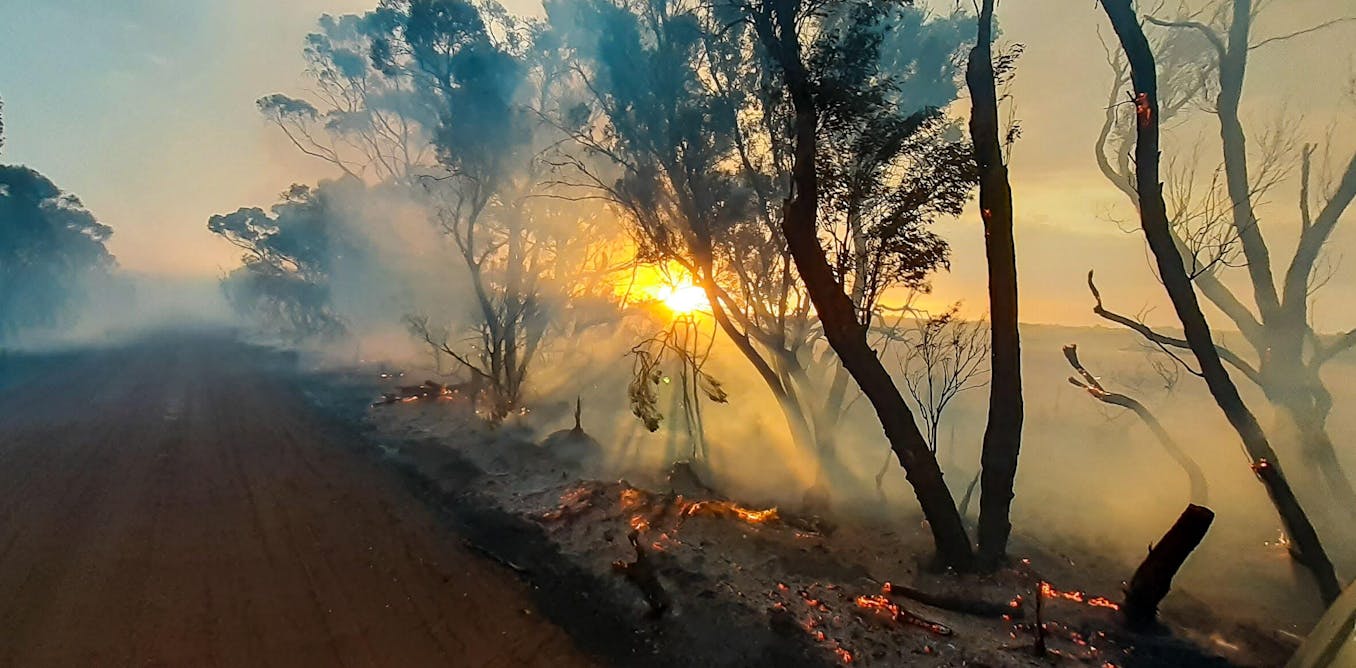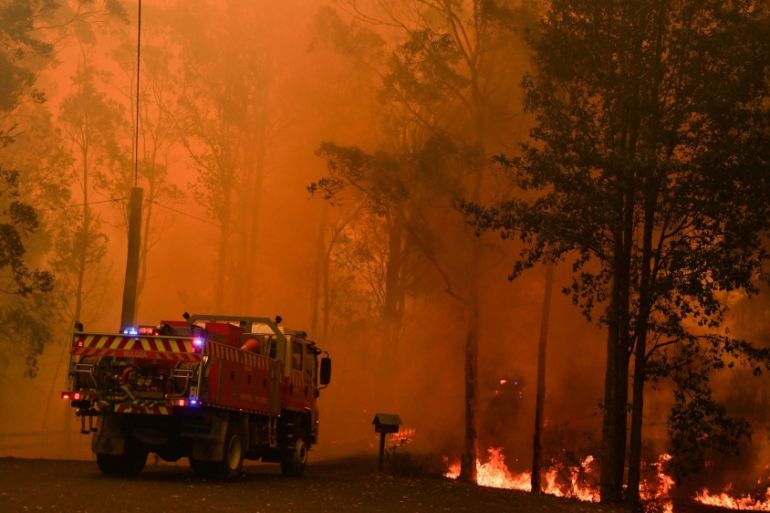Strategizing for Safety And Security: Establishing an Effective Bushfire Management Plan
Essential Tips for Bushfire Monitoring to Guarantee Fire Security

Recognizing Bushfire Danger Degrees
Comprehending the differing levels of bushfire threat is crucial for efficient planning and prep work in mitigating possible risks to lives and residential or commercial properties. Bushfire threat degrees are usually classified based on variables such as weather, gas availability, topography, and historical fire habits. By understanding these risk degrees, neighborhoods and individuals can proactively execute techniques to reduce vulnerability and boost resilience despite prospective bushfire occasions.
The very first degree of bushfire danger is reduced risk, where the probability of a bushfire taking place and creating significant damage is marginal. This degree often takes place throughout periods of low temperature levels, moderate humidity, and marginal wind rates. Moderate threat degrees show a raised potential for bushfires due to escalating climate condition or gas schedule. High-risk levels represent a significant danger, with problems helpful to fast fire spread and severe fire actions. Severe risk degrees are one of the most important, posing impending risk to lives and buildings due to severe climate condition and extremely flammable gas.
Comprehending these bushfire danger levels makes it possible for stakeholders to customize their preparedness and reaction actions accordingly, ensuring a aggressive and efficient technique to bushfire monitoring.
Establishing a Defensible Space
Reliable bushfire monitoring starts with developing a defensible space around homes to enhance defense against prospective fire risks. A defensible area is a barrier zone that produces a barrier between a framework and the bordering flammable vegetation. This room serves as an essential line of protection, offering firemans a risk-free location to operate and aiding to reduce the threat of a fire spreading out to the building.
When establishing a defensible room, it is necessary to take into consideration the design of the home and the surrounding landscape. Cleaning greenery, particularly highly combustible plants, within a particular span of the residential property can help stop the quick spread of fires. Furthermore, preserving a well-irrigated area around the property can even more improve its defensibility.
Normal upkeep of the defensible space is crucial to guarantee its performance. This consists of trimming overhanging branches, removing dead plants, and keeping the area complimentary of particles. By investing effort and time right into developing and preserving a defensible space, property proprietors can considerably boost their chances of shielding their homes and possessions during a bushfire.
Implementing Fireproof Landscape Design
When creating landscapes to reduce the threat of bushfires, incorporating fire-resistant elements is vital for boosting residential property defense and reducing fire dangers. Select plants with high dampness web content, reduced oil web content, and marginal dead vegetation to minimize the danger of fire spread.

Producing an Emergency Situation Discharge Strategy
Creating a comprehensive emergency situation evacuation plan is crucial for making sure the safety and wellness of people Going Here during potential bushfire events (BAL Assessment). An efficient discharge plan ought to detail clear procedures to comply with in the occasion of a bushfire risk, including marked emptying courses, setting up points, and communication protocols
To begin creating an emergency situation emptying strategy, it is essential to analyze the specific dangers and vulnerabilities of your place. Determine multiple evacuation paths that bring about risk-free areas far from the fire, thinking about aspects such as terrain, roadway accessibility, and possible risks. Establish interaction networks to sharp homeowners of an impending discharge, utilizing methods such as alarms, message informs, or door-to-door alerts.
Routinely review and practice the discharge strategy with all residents or area members to make certain everybody comprehends their functions and obligations. Conduct drills to check the performance of the strategy and make any required modifications. By having a well-prepared discharge plan in place, you can boost the possibilities of a orderly and risk-free evacuation throughout a bushfire emergency situation.
Keeping Fire Security Equipment
After developing a detailed emergency situation discharge prepare for bushfire incidents, it is necessary to focus on the normal upkeep of fire safety and security devices to ensure ideal capability and preparedness. Normal upkeep of fire safety and security equipment such as fire extinguishers, smoke alarm, smoke alarm, and automatic sprinkler is vital in safeguarding lives and building during a bushfire. Performing regular examinations, testing, and servicing of these devices by qualified professionals is vital to assure they are in working order when required.
Fire extinguishers need to be examined frequently for stress degrees, noticeable damages, and appropriate capability. By vigilantly preserving fire security devices, individuals can enhance their preparedness and action capabilities in the occasion of a bushfire.
Conclusion
To conclude, effective bushfire administration entails understanding risk degrees, creating defensible rooms, useful source executing fireproof landscape design, creating discharge strategies, and maintaining fire safety and security devices. By complying with these necessary tips, people can make sure far better fire security and safety and security for their neighborhoods and properties. It is essential to focus on proactive actions to mitigate the risks connected with bushfires and to be gotten ready for emergencies.
By comprehending the nuances of bushfire risk degrees, creating defensible areas, executing fireproof landscape design, creating extensive evacuation strategies, and guaranteeing the upkeep of fire safety equipment, communities and individuals can considerably bolster their durability against the devastations of wildfires - BAL Assessment. These pointers are not only critical for protecting against immediate fire threats yet additionally for promoting long-lasting Read More Here fire protection approaches that can make a significant difference in the face of rising bushfire threats
Risky levels indicate a substantial threat, with problems conducive to rapid fire spread and severe fire habits. Routine upkeep of fire safety tools such as fire extinguishers, smoke detectors, fire alarm systems, and lawn sprinkler systems is important in guarding lives and residential or commercial property throughout a bushfire.In verdict, efficient bushfire administration involves recognizing danger levels, creating defensible rooms, executing fire-resistant landscaping, creating evacuation strategies, and maintaining fire safety and security tools.